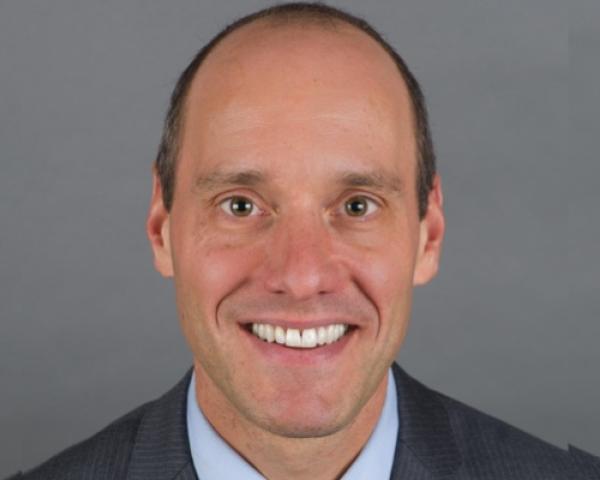The Costly Strategy Hidden in Plain Sight
Every year, property and casualty carriers leave billions on the table—not because of nuclear verdicts, runaway juries, or third-party litigation funding, but because of something far more subtle and entirely under our control: the way we negotiate.
In an era where 99% of litigated claims settle, the cultural instinct on the defense side to “hold back” our strongest arguments has become a billion-dollar blind spot. We ration key negotiating points, fearing we’ll run out of ammo. We save key arguments to “surprise them at trial.” We frame less, anchor less, and persuade less. Meanwhile, the plaintiff bar is doing the opposite—and it’s working.
This isn’t a legal problem. It’s a strategy problem.
And it gets worse.
Not only do we hold back the arguments that matter—we rely on formats that make persuasion nearly impossible. While plaintiff attorneys lead with structured, written advocacy in the form of demand packages, defense teams default to brief, reactive phone calls that suppress advocacy and concede control.
We’re not just saying less—we’re saying it in the least effective way possible.
Defense Negotiation Is the Real Battleground
We are seeing more and more claim organizations taking fewer than 2% of their litigated cases to trial. Many are under 1%. This means 99 out of 100 cases are resolved through negotiation.
Negotiation isn’t a placeholder—it’s the battlefield. The weapons are advocacy, storytelling, anchoring, and framing. And the defense is losing that ground war.
Plaintiff attorneys are presenting persuasive, data-rich demand packages early. They’re setting narratives. They’re leveraging AI tools like EvenUp Law to benchmark value, build urgency, and preempt our defenses.
There’s a reason EvenUp raised $235 million in 18 months and reached unicorn status. Good persuasion works, and if personal injury attorneys like the results, they’ll come back for more. They are. Because this approach of not concealing their case works. Compelling packages work. Anchoring works—even when the recipient knows they’re being anchored, according to multiple studies!
Meanwhile, defense teams are often confined to hurried phone calls, where the plaintiff attorney dominates the airtime and the adjuster is expected to recall and deploy key defenses from memory. This dynamic favors narrative over nuance, emotion over evidence. It makes storytelling nearly impossible.
We almost never prepare comprehensive offer letters in a manner similar to plaintiff demand packages. When we do, it’s usually just a number, or a number with some boiler plate denials. We don’t sell our offers they way they try to sell their demands.
In short, we’re losing the negotiation battle by not showing up with our best weapons—or using them at all.
What the Plaintiff Bar Understands That We Ignore
We’ve been programmed not to show our hand. The question is, by whom? Examples of what we hear every day:
#1 - “I’m Saving It for Trial”
This had logic in the 1980s, when trial was common (or in movies, where a surprise reveal causes the jury to gasp). Today, trials are rare, and saving your best arguments for the courtroom is like saving your best sales pitch for a client who’s already walked out. When we don’t use our strongest defenses in the 99% of cases that settle before trial, we’re leaving value on the table. Worse, we’re letting plaintiffs drive up expectations with no rebuttal narrative in place. We’re not framing, we’re not anchoring, we’re not controlling the narrative. Given the legal system environment, we should be using our strong points to avoid trial (not to win at trial in the one out of 100 times a case may find its way there).
#2 - “I Don’t Want to Show My Hand”
This assumes that showing strength is a liability. In negotiation theory, it’s the opposite. Revealing credible, well-supported defenses early can shift expectations, reshape the perceived case value, and create decision-pressure. It’s not about tipping your hand—it’s about owning the story and framing the narrative. Hiding defenses cedes narrative control.
#3 - “I Need Ammo for Later Offers”
This is backwards. If your strongest arguments can drive resolution now, why wait?
This is like saying, “I don’t want to use my strongest points to persuade the other side to settle now, because I might need them later if they don’t settle.” The plaintiff bar doesn’t hold back information with this goal in mind; we don’t need to, either. Sometimes, the absurdity of holding back becomes clear through analogy. Think about salary negotiation. Imagine asking for $150,000 but saying, “I’ll explain why I deserve it in a few weeks.”
#4 – “Plaintiff counsel won’t engage early”
This is an argument commonly cited on both sides of the fence. Imagine what plaintiff counsel says after they’ve submitted an extensive demand package, only to get a non-response or simply a counter-number in return. Both sides feel this way. Yet, plaintiff counsel are rational actors. Whether fully engaged or not, persuasion affects their perception of the case.
#5 – “I’d prefer to negotiate orally rather than in writing”
There is a reason plaintiff attorneys produce written demand packages, rather than just calling the claim professional to run through elements of the demand orally. Put simply, written persuasion in this context is more effective. Precision and documentation matter. Substantive evidence builds credibility. Written persuasion has reference value. And, powerfully, a written offer letter (in most jurisdictions) might just make it to the underlying claimant.
Distracted by Threats We Can’t Control While Overlooking Those we Can
The defense community spends enormous energy discussing external threats: nuclear verdicts, litigation financing, venue shopping, social inflation. These are real—but they’re also out of our control. They don’t require us to change. They allow us to feel victimized.
By contrast, how we choose to advocate is entirely within our control. And right now we’re choosing to hold back key arguments. We’re also choosing to not to write things down, believing it won’t influence the plaintiff attorney or their client—which is exactly how they want us to think.
Our Call to Action
Today’s plaintiff attorneys are no longer winging it. They’re investing early. They build narratives and leverage data. They’re using AI to strengthen their demand packages, augment them with verdict data and aggregated settlement value intelligence. They target every relevant stakeholder: the adjuster, defense counsel, and even the insured (via hammer letters) And they apply pressure with time-limited demands, designed to trigger urgency and fear of bad faith exposure.
We must do the same!
- Develop structured offer packages that counter the persuasive impact of demand packages.
- Don’t hold back key arguments—use them early, when they have a chance to shift the case trajectory.
- Leverage written formats to clarify and reinforce the defense position—don’t rely on bits and pieces raised in phone conversations.
- Stop waiting for mediation to present a persuasive case for settlement—get out in front of it.
Not doing these things is costing our industry billions. We can win this battle. We have the smarts, the tools and the experience. We can be powerful advocates, persuasive negotiators, and we can do better to anchor, frame, and own the narratives of our cases.





































